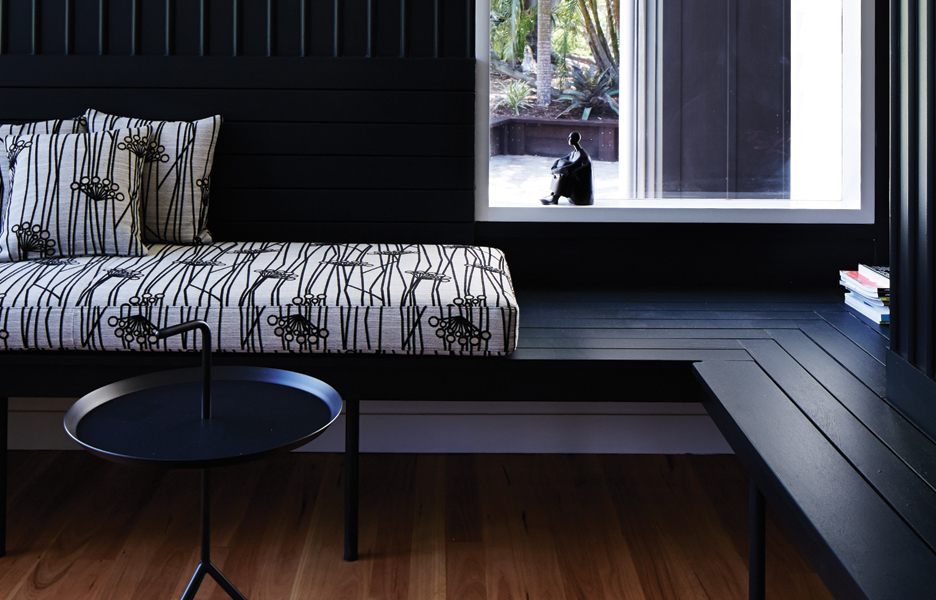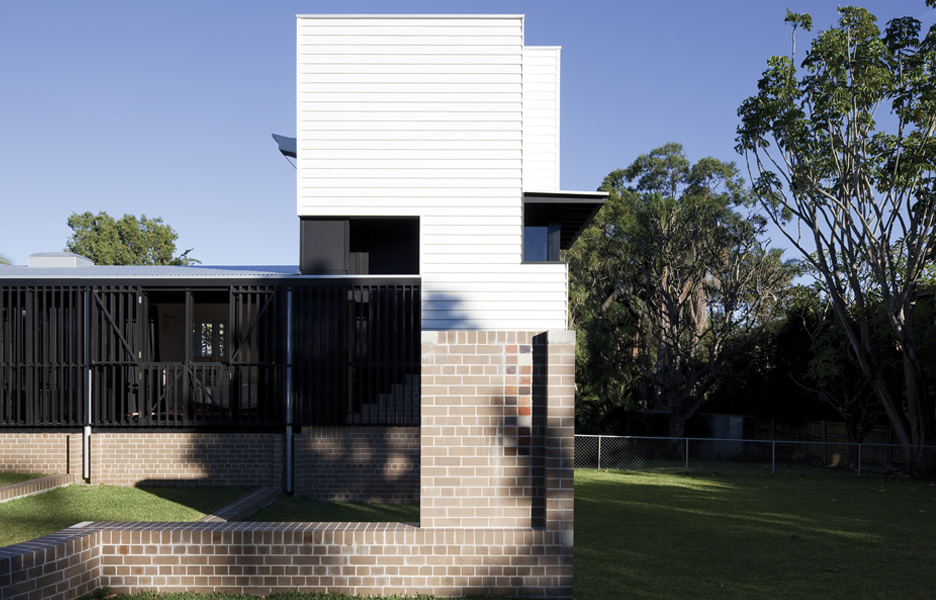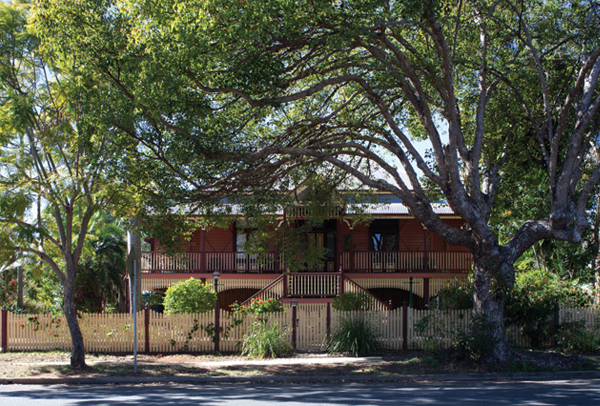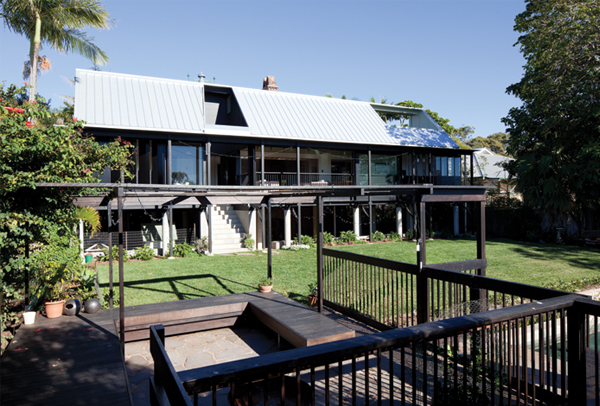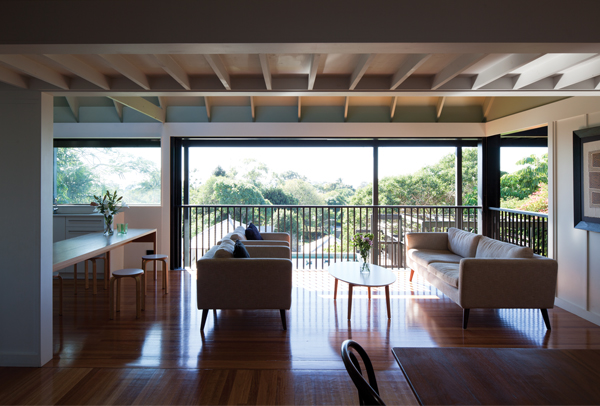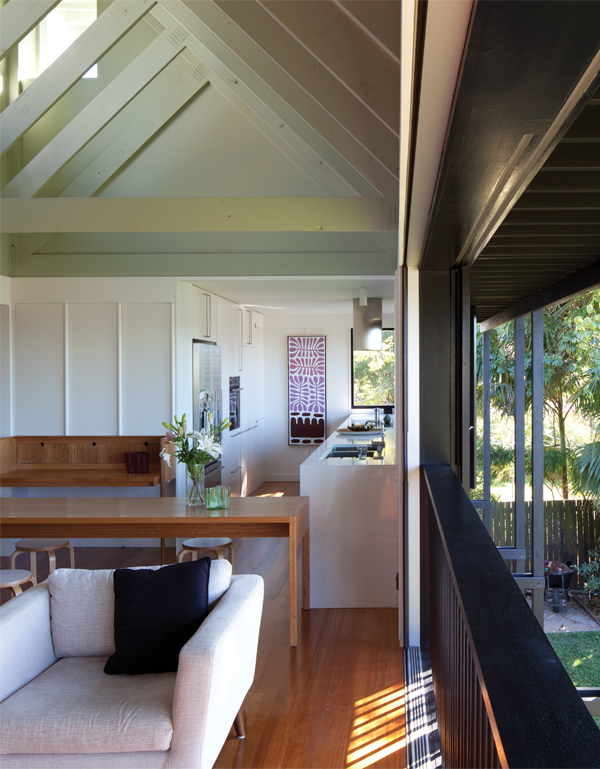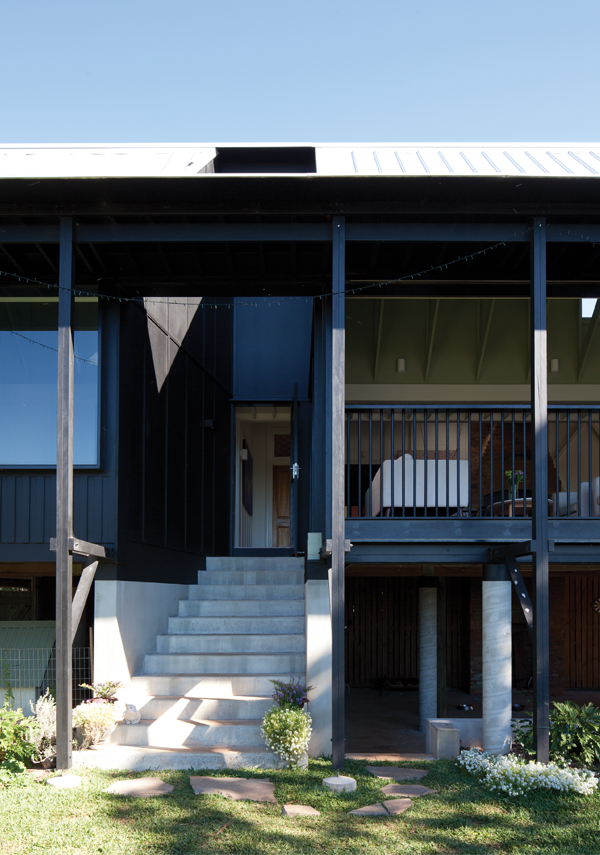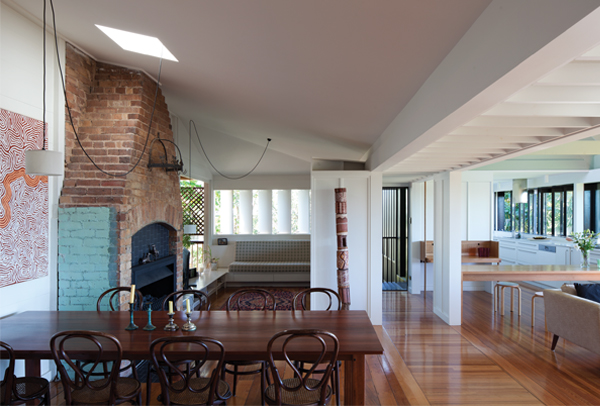
Sandgate House by OVP
Sandgate House by OVP
Share
Location: Brisbane, Australia
Architect: Owen and Vokes and Peters
Review: Nick Skepper
Photography: Jon Linkins
When commissioned to extend an existing grand Queenslander in Sandgate, twenty minutes’ drive north of Brisbane, Owen and Vokes and Peters (OVP) was granted the opportunity to work with an existing house with a more overt civic presence than most.
At the northern fringe of Sandgate’s high street, the house, which has a scale and grandeur befitting its high street address, is situated on a crest that falls rapidly to the east, presenting broad views to Moreton Bay. To the west, the topography falls gently across the street, toward a natural lagoon and local scout hall. The easterly aspect and view of the bay from the rear of the property presents a compelling case to draw the focus of activity in the house from the street front to the backyard – and this is inevitably where the architects have intervened.
A close reading of the scheme, however, reveals a considered intent to provide the rear extensions with some level of address back to the street, even from deep within the property, and to retain as much of the rear garden setting as possible.
In terms of the history of the practice, Sandgate House is significant for being a post and beam pavilion with a consistent extruded cross-section – a type not often employed by OVP. In lieu of large planes of weatherboard and masonry walls anchoring the building to the site, the architects have deployed a large steeply pitched, metal-clad roof with a low brim, a heavily glazed eastern wall and a set of handsome concrete piers for legs. The result is an elevation that is more roof and pier than wall – a character shared with the existing house and its massive pyramidal tin roof and muscular timber stumps. Belying the modest scope of the extensions, the steep cross-section provides the new work with a scale comparable to that of the existing house.
In reworking the back of the existing building the architects have partly liberated the rear verandah, previously occupied as a kitchen, and removed an existing nonoriginal deck. In its place we find a kitchen, living and dining space, with a master bedroom stretched across the back of the house. The cross-section is articulated to make legible the transition from old building fabric to new, by compressing the ceiling at the point where one passes underneath the original verandah beam and extruding this moment to mark the transition. As one moves from the street, passing through the front verandah and generously scaled central hallway, constantly drawn forward by the panorama of Moreton Bay framed by the low brim of the extension, it is the undulation of overhead volumes that renders explicit the transition from room to room and new to old.
Arriving at the easterly edge of the extension, and as the glazing retracts, only a fragile veil separates the user from the exterior by way of a dowel balustrade and a secondary, sparse set of timber piers supporting the brim. The radical move to not append a deck to the back of the building, flying against orthodoxy, has the dual effect of massively benefiting the quality of interior space through an immediacy to the exterior and minimising the built footprint to retain much of the garden setting. This new collection of living and sleeping spaces share qualities with OVP’s notion of the sleepout, an oft-repeated spatial type within the practice’s oeuvre, exhibiting the character of an informally occupied verandah space that has been enclosed and hence combines the amenity of an interior with the proximity to the exterior sought in a verandah.
The extruded cross-section of the extension is interrupted at two moments that mark the points of egress from the living spaces to the garden and up to a roof terrace outlook perch respectively. A dramatic slice through the building connects the upper level with the garden via a masonry stair. Puncturing the roof at the same moment, this slice presents an unexpected frame of sky as we descend toward the garden – a view otherwise denied by the low brim of the roof.
At the opposite end of the plan, a narrow stair slides behind the kitchen and ascends to an opening in the roof, providing a small outlook perch. This moment occurs at the northern end of the extension, where the new work slips past the existing house and presents an elevation to the street. To the east we overlook a heavily vegetated suburban foreground to the bay; and to the west a view past the existing house’s distinctive ogee profiled verandah roof toward the high street and scout hall beyond.
Through a set of careful manoeuvres, the architects have retained the low-density garden setting of the suburb and captured and presented the much desired coastal view, while simultaneously imbuing the new work with a formal presence to and surveillance of the street – a nod to their understanding of the building as a small piece of the city within a larger suburban context.
Project Details
ARCHITECT: Owen and Vokes and Peters
TEAM: Paul Owen, Stuart Vokes, Aaron Peters, Michael Lineburg, Lucy Jeffries
Construction period: 9 months
PRACTICAL COMPLETION DATE: October 2013
SITE AREA: 1131sqm
EXISTING HOUSE AREA: 275sqm (not including ‘under the house’)
EXTENSION AREA: 62sqm (not including roof terrace)
STRUCTURAL ENGINEER: Greg Killen Consulting Engineers
HYDRAULIC ENGINEER: Greg Hamilton, H Design
BUILDER: Steven Robson, Robson Constructions
INTERIORS & CUSTOM FURNITURE: Owen and Vokes and Peters.
You Might also Like
